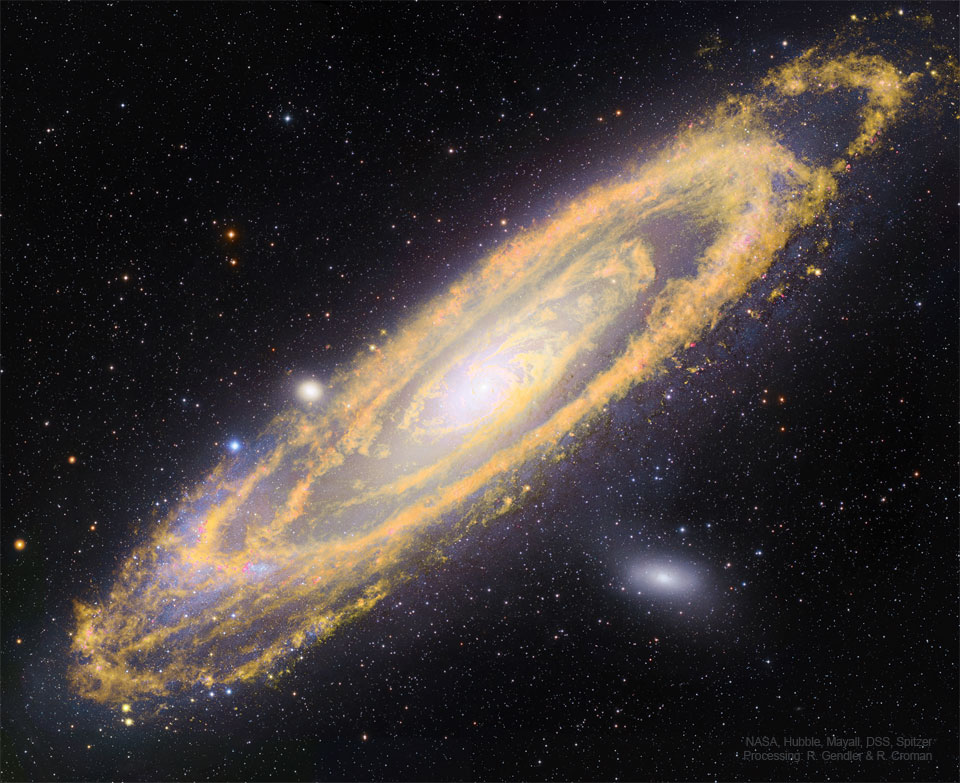2023年10月6日
The Once and Future Stars of Andromeda
Image Credit: NASA, NSF, NOAJ, Hubble, Subaru, Mayall, DSS, Spitzer; Processing & Copyright: Robert Gendler & Russell Croman
Explanation: This picture of Andromeda shows not only where stars are now, but where stars will be. The big, beautiful Andromeda Galaxy, M31, is a spiral galaxy a mere 2.5 million light-years away. Image data from space-based and ground-based observatories have been combined here to produce this intriguing composite view of Andromeda at wavelengths both inside and outside normally visible light. The visible light shows where M31’s stars are now, highlighted in white and blue hues and imaged by the Hubble, Subaru, and Mayall telescopes. The infrared light shows where M31’s future stars will soon form, highlighted in orange hues and imaged by NASA’s Spitzer Space Telescope. The infrared light tracks enormous lanes of dust, warmed by stars, sweeping along Andromeda’s spiral arms. This dust is a tracer of the galaxy’s vast interstellar gas, raw material for future star formation. Of course, the new stars will likely form over the next hundred million years or so. That’s well before Andromeda merges with our Milky Way Galaxy in about 5 billion years.
Tomorrow’s picture: in front of the Sun
仙女座星系过去和未来的恒星
影像提供: NASA, NSF, NOAJ, Hubble, Subaru, Mayall, DSS, Spitzer; 影像处理与版权: Robert Gendler & Russell Croman
说明: 这幅仙女座星系的影像,不仅显示目前恒星之所在,也呈现了未来恒星即将现身的位区。如众所熟知的,庞大美丽的仙女座星系(M31),是个离我们只有2百50万光年远的螺旋星系。这幅很有趣的仙女座星系组合影像,整合了太空与地基望远镜的观测数据,以同时呈现此星系在可见光及非可见光波段的景观。影像里的白与蓝色、呈现哈勃、昴星团、及梅奥尔望远镜的可见光数据,用以突显M31目前恒星所在的位置。而来自NASA斯皮策太空望远镜的橙色红外光数据,则显示M31未来的恒星即将形成的区域。红外光数据所显示的,是仙女座星系广袤的螺旋臂上,受到恒星加热的庞然尘埃带。这些尘埃是此星系大量星际气体的示踪物,更是未来恒星形成的原材料。很可确定的是,这些新恒星很可能会形成于接下来的一亿年里,远在约50亿年后仙女座与我们的银河系合并之前。
明日的图片: in front of the Sun


